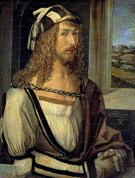Art, Art History and Design, School of
Date of this Version
3-1988
Abstract
The popularity of Joseph as carpenter-provider for Mary and Jesus was discussed by Cynthia Hahn last year (LXVIII1,9 86, 54- 66) in relation to Campin's Merode Triptych and other examples of 15th-century art and literature. In Campin's painting, Joseph is represented in the right wing seated amid an array of carpenter's tools, pieces of wood, and handmade wooden objects. The oft discussed winepress strainer, or firescreen (the latter suggested by Hahn), which Joseph drills, appears to have a visual correlative in an unpublished anonymous 15th-century Flemish panel painting in the Museo Correr, Venice (Figs. 1, 2).
There, on the verso of an Annunciation, which is represented across two small panels, Joseph is shown drilling holes into a thick block of wood that already bears three holes. It is small and rectangular and looks very much like the top of the footstool below Joseph's feet in the Merode Triptych and generally like the block Joseph drills there in much the same manner. In the painting in Venice, Joseph's gown and cape are red, the hood is black, and his head is bald. In Campin's painting the only correspondence is Joseph's red sleeves. In the Correr panel, an unidentified male figure is seated next to Joseph on the other side of a column in another niche. He wears a green robe and what appears to be a fur hat, and he flips through the pages of a book.
Although the two figures are represented on separate panels that are now exhibited side by side, it is possible that they were originally displayed separately. Based on a physical examination (materials, panel edges, remains of the old frame, paint gaps), Dr. Giandomenico Romanelli, Director of the Civici Musei Veneziani d'Arte e di Storia, concludes that the two panels may have been conceived as separate panels that were parts of a structure that could open. The architectural settings, which appear correct only when viewed from below, according to Dr. Romanelli, suggest that the work, possibly an altarpiece, was originally placed above eye level.
Be that as it may, the modest panel with Joseph links the Annunciation with Joseph the carpenter, as in the center panel of the triptych at the Cloisters. Although the object Joseph drills in each painting is slightly different in shape, both of course are linked to carpentry, which is, perhaps, more to the point than their specific identification. In either case, historians of Northern art may now add this small painting in Venice to their considerations of the issue of the "winepress" and the Merode Triptych.


Comments
First published by the College Art Association in the March 1988 issue of The Art Bulletin (Vol. 79, No. 1). Copyright (c) Alison Stewart. Reprinted with permission.